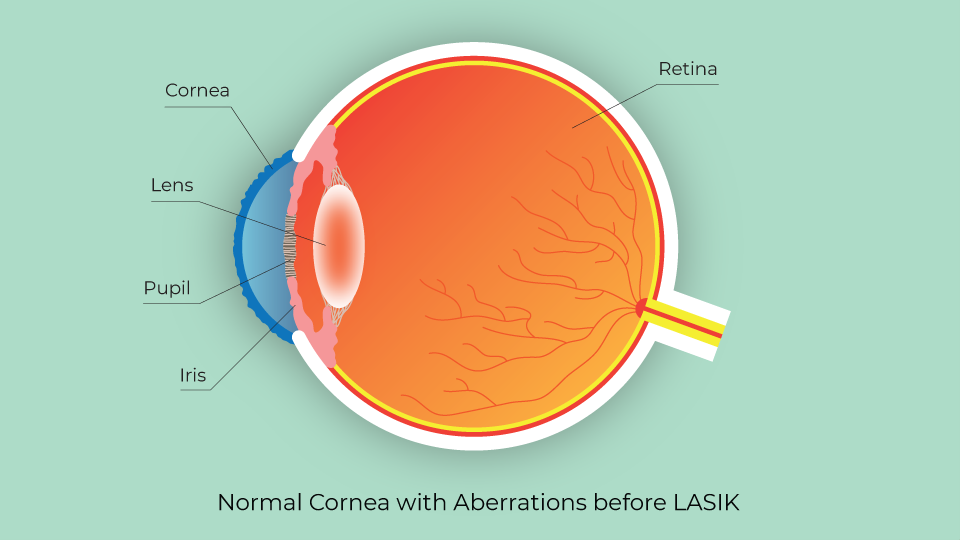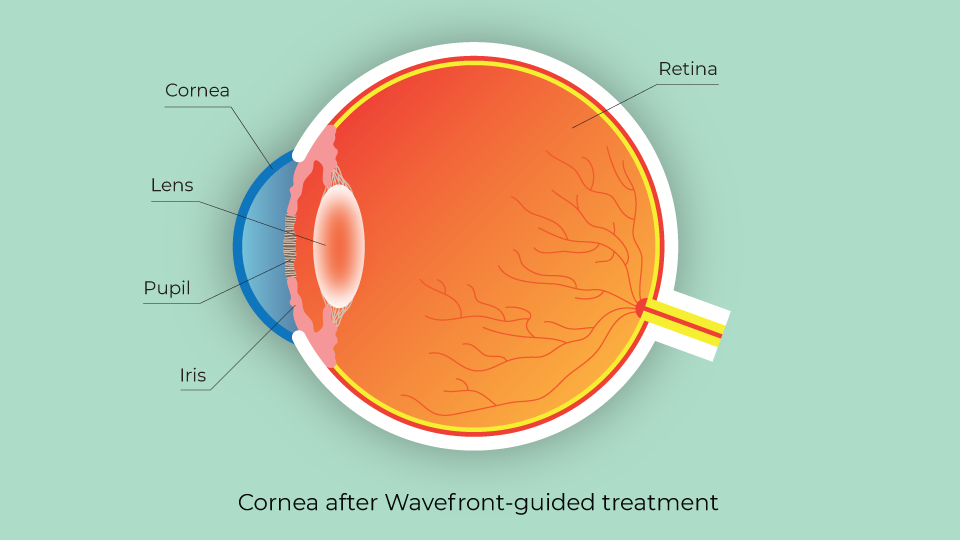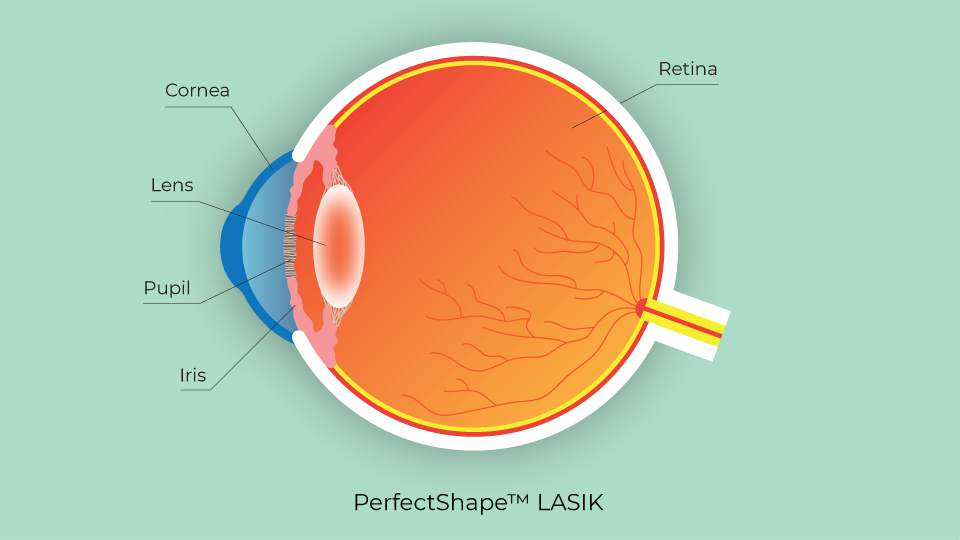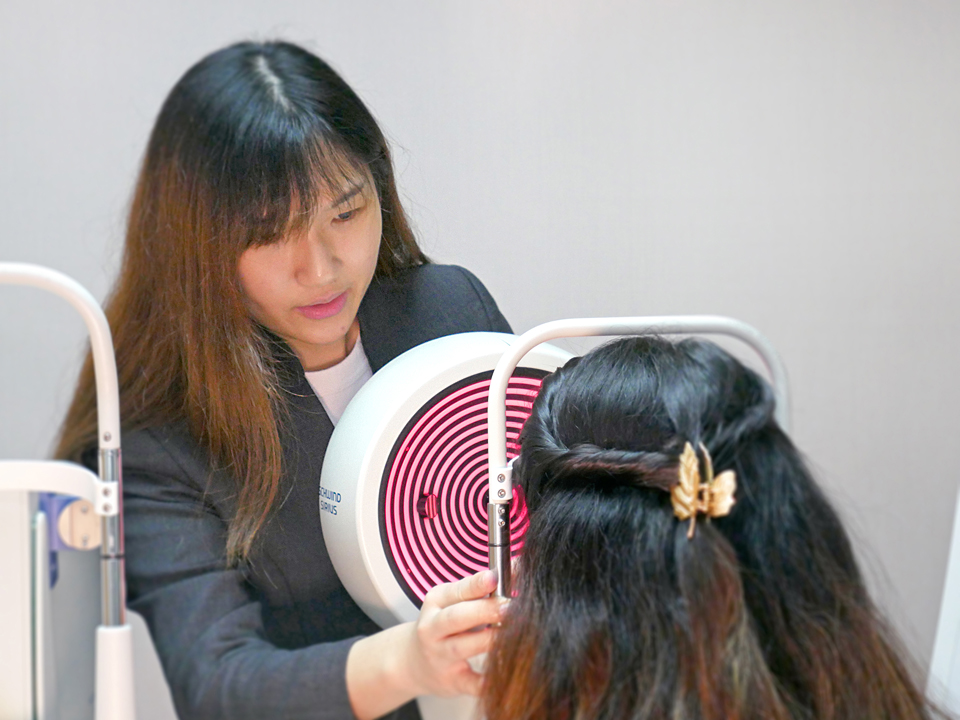Types of Customised LASIK
Advanced Customised LASIK Xtra | Types of Customised LASIK | Why Choose Us For LASIK? | Our Technology | Your LASIK Journey | Your LASIK Surgery
Advanced Customised LASIK (PerfectShape® LASIK)
In customized LASIK treatment, the laser ablation is specifically geared towards treating the unique features of the individual eye of each patient.
A topographer is used to measure the individual shape and creates a customised "power map" of the cornea. This allows the surgeon to treat your corneal imperfections.
Customised LASIK results in a larger treatment zone and improves quality of vision especially at night and can potentially have a more enduring effect.
What are the different types of customised LASIK?
- Wavefront-guided LASIK
- Aberration-free, aspheric or wavefront-optimised LASIK
- Corneal wavefront-guided or topography-guided LASIK

Normal cornea with all the inherent imperfections found in all patients' pre-LASIK surgery
Wavefront-guided LASIK

Wavefront-guided LASIK was the first form of customised LASIK treatment. However, it does not:
- Take into account the original shape/contour of the cornea, or
- Anticipate induced aberrations caused by LASIK
Disadvantages of wavefront-guided LASIK:
- Difficult to measure the visual distortion of the whole eye, including the lens
- Variable results obtained which can affect the final refractive accuracy
- Small difference in results between standard and wavefront-guided LASIK
Aberration-free, aspheric or wavefront-optimised LASIK

Wavefront-optimised LASIK is a very basic partial customisation:
- It eliminates an average amount of aberrations from every eye and only treats some aberrations
- It is better than standard LASIK but does not have the same final quality of vision compared to PerfectShape® LASIK
This technique is the favourite amongst many corneal refractive surgeons as it is:
- Simple and easy to calculate
- Achieves relatively good and consistent results
Corneal wavefront-guided or topography-guided LASIK (CWFG LASIK)

In studies, Corneal wavefront-guided or topography-guided LASIK has been shown to achieve better treatment results compared to wavefront-guided and wavefront-optimised treatments.
How does this work?
- Corneal shape is most important for good vision as it governs the focus and quality of vision
- Distorted cornea = Poor vision
- Therefore, we have to correct the shape of the cornea
- Imperfections of the cornea are smoothened over by PerfectShape® LASIK™

SCHWIND Sirius corneal topographer used to measure the shape of the cornea
Corneal distortions are corrected and vision can be improved beyond 6/6 or 20/20 vision.
This is difficult to achieve with standard LASIK as it only corrects myopia and astigmatism but not the finer corneal distortions (higher-order aberrations).
Standard vs Customized LASIK
| Standard / Conventional LASIK | Perfect Shape® LASIK (Advanced Customised LASIK) |
|
|---|---|---|
| Surgical assessment | Easy | Complex |
| Night vision | Poor night vision, especially for patients with large pupils | Maintains and can improve night vision, especially for patients with large pupilss |
| Individual characteristics | Not necessary | Very important |
| Experienced surgeon | Not necessary | Very important |
| Results | Good | Excellent |
| Quality of vision | Average | Very good to excellent |
| Cost | Less | More |